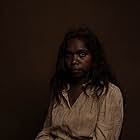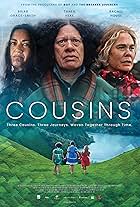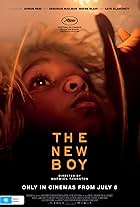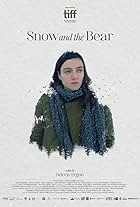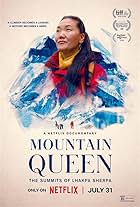Una raccolta che comprende otto storie di e sulle persone delle Prime Nazioni.Una raccolta che comprende otto storie di e sulle persone delle Prime Nazioni.Una raccolta che comprende otto storie di e sulle persone delle Prime Nazioni.
- Premi
- 3 vittorie
Foto
Te Wakaunua Te Kurapa
- Te Whenuanui
- (as Te Wakanua Te Kurapa)
Leonard Mathews
- Ensemble - Bull and the Ruru
- (solo nei titoli)
Trama
Recensione in evidenza
We Are Still Here is an anthology of indigenous stories, told through a series of interwoven short films- made by indigenous filmmakers- that reflect upon both the real and cultural violence inflicted upon the indigenous peoples of modern day Australia, New Zealand and Samoa.
These slice of life tales span from the distant past into the distant future, covering the timeframe from when Captain James Cook first made contact with people in the Austral-Pacific Islands region, to a sort of post-apocalyptic wasteland, in the year 2274.
It opens and closes with a partly animated segment about a Polynesian fisherwoman from Samoa, who is trying to initiate her daughter into the traditions of her people, only to lose her to the modern culture of the big cities which sprung up as a result of the arrival of Captain and his ships. Leaving her to struggle, not only with daily tasks of survival, but also with attempts to re-establish a connection with her daughter, and her new family.
This transitions into a segment which seems to have been inspired by Rolf De Heer & David Gulpilil's feature film The Tracker, in which a lost soldier, who had been sent into the wilderness of the Outback, on a mission to genocidally oppress the indigenous peoples there, is forced to rely on help from a local tracker, when he becomes lost, after being separated from his unit. A story which takes a haunting turn, in the end.
Next, we are shown a very powerful story about the family of a Maori chieftain, whose family- and community- are torn between two cultures: their own and one of assimilation, on the brink of a war that very well might see their ways all but wiped out.
This is followed by a more light-hearted segment about an aboriginal soldier who has been left traumatized and alone in a trench in Gallipoli, where he has been sent to fight for his colonizers in WWI, after watching his entire unit be violently killed in combat with rival forces. On the brink of suicide, he gets a new lease on life, after a kind gesture from a Turkish soldier who finds himself in a similar situation in the trench opposite from his own. After trading gifts, and a moment of compassionate brotherhood, the tale takes an ironic turn, which teaches him a valuable lesson, that leads him to make a truly heroic- and rather symbolic- gesture of grand sacrifice.
The next story is tied into this via the theme of the importance of youth as being that which continues on the cultural legacy of traditions, which are at risk as a result of the imposition of colonization, from generation to generation- which is, arguably, the theme which runs through the entire film, and connects the various segments together.
Thus, making the film whole, and providing an explanation for it's title.
This is a sci-fi tale, set in a post apocalyptic world, where a sickly, but still-youthful, grandfather, is trying to pass on the knowledge his granddaughter will need in order to survive in this post-resource, bartering based, society. Upon his deathbed, he passes on the only connection to the old world he has, to her- something which commands great value. Leaving her to deal with the choice (it is suggested many indigenous youth must face) of giving up this connection to her past, in order to save that which she, otherwise, holds so dear in the present...her grandfather's life.
The next short film tells a story about a broken young- and homeless- aboriginal woman, whose anger at the trauma which has been inflicted upon her, is outletted via acts of self harm and revolutionary artistic expression. While spraypainting anti-patriotic messages on a wall, one day, she meets a conflicted young aboriginal man, whom she connects with, after the two share the experience of being rolled by the police, for making such politically charged statements. We learn of her trauma in a flashback sequence, which shows how much hope she had...before her mother was viciously murdered in cold blood, in an attack by a group of ultra-right patriots, who had targeted them- and escaped justice- because they were out protesting for indigenous rights. The dichotomies of the (in)justice system, as experienced by aboriginal people, are exposed here in no uncertain light...and ultimately lead to the fiery conclusion of this tale.
And acts as the transitional theme to the next segment...which was a fan favourite at the TIFF premiere.
The filmmakers titled this next segment "The Grog Shop", which tells the story of the experience of a middle aged working class aboriginal man, who is just trying to live his life, and find love, in the Northern Territories of Australia. Each day, after work, he hangs out with an elderly friend- who he shares cigarettes with- before he goes into the local liquor store, to grab some drinks and beef jerky. And each day, like clockwork, he is harassed by the same non-local police officer, who asks him for his papers- which are, apparently required for aboriginal people to purchase alcohol in the area. Despite knowing, full well, who he is, and that his papers are in order...this officer takes it upon himself to steal his alcohol, for a variety of made-up reasons, in a blatant attempt to shame him, simply, for being aboriginal. This pushes the man to the brink of acting out in violence...but he knows that is exactly what the officer wants him to do. So, he, humourously, throws the situation back in his face...when he reveals that he had ulterior motives for going into the store each day...and that he doesn't even drink.
The final segment tells the tale of a young aboriginal jock, who has all but given up ties to his culture...that is, until he goes on a vengeful journey to find his (white) deadbeat father, after losing his mother, who had raised him on her own. This angst gets him caught up and arrested, during a protest. Where he finds himself in a paddywagon, with a group of seasoned indigenous activists, on their way to Victoria prison. Here, his roots expose themself, as he is treated just like every other aboriginal person by the authorities...with violence and disdain. Here, he not only experiences violent torture first hand, but also witnesses the murder of one of the fellow men, at the hands of the racist prison guards.
The whole thing is expertly constructed, with obvious thematic transitions used to connect each film together...with the overarching theme, mentioned above, giving the whole film, in it's entirety, a very cohesive feel.
On top of this, the actors all give very powerful performances.
If this film doesn't manage to arouse emotions of sadness and anger within you- and damn near bring you to tears- it's possible you lack compassion and empathy, and might be a heartless individual.
Your reaction to watching it is as good a test of any, to tell whether you might be a closet racist.
A very moving film.
7 out of 10.
These slice of life tales span from the distant past into the distant future, covering the timeframe from when Captain James Cook first made contact with people in the Austral-Pacific Islands region, to a sort of post-apocalyptic wasteland, in the year 2274.
It opens and closes with a partly animated segment about a Polynesian fisherwoman from Samoa, who is trying to initiate her daughter into the traditions of her people, only to lose her to the modern culture of the big cities which sprung up as a result of the arrival of Captain and his ships. Leaving her to struggle, not only with daily tasks of survival, but also with attempts to re-establish a connection with her daughter, and her new family.
This transitions into a segment which seems to have been inspired by Rolf De Heer & David Gulpilil's feature film The Tracker, in which a lost soldier, who had been sent into the wilderness of the Outback, on a mission to genocidally oppress the indigenous peoples there, is forced to rely on help from a local tracker, when he becomes lost, after being separated from his unit. A story which takes a haunting turn, in the end.
Next, we are shown a very powerful story about the family of a Maori chieftain, whose family- and community- are torn between two cultures: their own and one of assimilation, on the brink of a war that very well might see their ways all but wiped out.
This is followed by a more light-hearted segment about an aboriginal soldier who has been left traumatized and alone in a trench in Gallipoli, where he has been sent to fight for his colonizers in WWI, after watching his entire unit be violently killed in combat with rival forces. On the brink of suicide, he gets a new lease on life, after a kind gesture from a Turkish soldier who finds himself in a similar situation in the trench opposite from his own. After trading gifts, and a moment of compassionate brotherhood, the tale takes an ironic turn, which teaches him a valuable lesson, that leads him to make a truly heroic- and rather symbolic- gesture of grand sacrifice.
The next story is tied into this via the theme of the importance of youth as being that which continues on the cultural legacy of traditions, which are at risk as a result of the imposition of colonization, from generation to generation- which is, arguably, the theme which runs through the entire film, and connects the various segments together.
Thus, making the film whole, and providing an explanation for it's title.
This is a sci-fi tale, set in a post apocalyptic world, where a sickly, but still-youthful, grandfather, is trying to pass on the knowledge his granddaughter will need in order to survive in this post-resource, bartering based, society. Upon his deathbed, he passes on the only connection to the old world he has, to her- something which commands great value. Leaving her to deal with the choice (it is suggested many indigenous youth must face) of giving up this connection to her past, in order to save that which she, otherwise, holds so dear in the present...her grandfather's life.
The next short film tells a story about a broken young- and homeless- aboriginal woman, whose anger at the trauma which has been inflicted upon her, is outletted via acts of self harm and revolutionary artistic expression. While spraypainting anti-patriotic messages on a wall, one day, she meets a conflicted young aboriginal man, whom she connects with, after the two share the experience of being rolled by the police, for making such politically charged statements. We learn of her trauma in a flashback sequence, which shows how much hope she had...before her mother was viciously murdered in cold blood, in an attack by a group of ultra-right patriots, who had targeted them- and escaped justice- because they were out protesting for indigenous rights. The dichotomies of the (in)justice system, as experienced by aboriginal people, are exposed here in no uncertain light...and ultimately lead to the fiery conclusion of this tale.
And acts as the transitional theme to the next segment...which was a fan favourite at the TIFF premiere.
The filmmakers titled this next segment "The Grog Shop", which tells the story of the experience of a middle aged working class aboriginal man, who is just trying to live his life, and find love, in the Northern Territories of Australia. Each day, after work, he hangs out with an elderly friend- who he shares cigarettes with- before he goes into the local liquor store, to grab some drinks and beef jerky. And each day, like clockwork, he is harassed by the same non-local police officer, who asks him for his papers- which are, apparently required for aboriginal people to purchase alcohol in the area. Despite knowing, full well, who he is, and that his papers are in order...this officer takes it upon himself to steal his alcohol, for a variety of made-up reasons, in a blatant attempt to shame him, simply, for being aboriginal. This pushes the man to the brink of acting out in violence...but he knows that is exactly what the officer wants him to do. So, he, humourously, throws the situation back in his face...when he reveals that he had ulterior motives for going into the store each day...and that he doesn't even drink.
The final segment tells the tale of a young aboriginal jock, who has all but given up ties to his culture...that is, until he goes on a vengeful journey to find his (white) deadbeat father, after losing his mother, who had raised him on her own. This angst gets him caught up and arrested, during a protest. Where he finds himself in a paddywagon, with a group of seasoned indigenous activists, on their way to Victoria prison. Here, his roots expose themself, as he is treated just like every other aboriginal person by the authorities...with violence and disdain. Here, he not only experiences violent torture first hand, but also witnesses the murder of one of the fellow men, at the hands of the racist prison guards.
The whole thing is expertly constructed, with obvious thematic transitions used to connect each film together...with the overarching theme, mentioned above, giving the whole film, in it's entirety, a very cohesive feel.
On top of this, the actors all give very powerful performances.
If this film doesn't manage to arouse emotions of sadness and anger within you- and damn near bring you to tears- it's possible you lack compassion and empathy, and might be a heartless individual.
Your reaction to watching it is as good a test of any, to tell whether you might be a closet racist.
A very moving film.
7 out of 10.
- meddlecore
- 12 set 2022
- Permalink
I più visti
Accedi per valutare e creare un elenco di titoli salvati per ottenere consigli personalizzati
- How long is We Are Still Here?Powered by Alexa
Dettagli
- Data di uscita
- Paesi di origine
- Lingue
- Celebre anche come
- Ainda Estamos Aqui
- Luoghi delle riprese
- Aziende produttrici
- Vedi altri crediti dell’azienda su IMDbPro
Botteghino
- Budget
- 4.000.000 A$ (previsto)
- Lordo in tutto il mondo
- 74.114 USD
- Tempo di esecuzione1 ora 30 minuti
- Colore
- Proporzioni
- 2.35 : 1
Contribuisci a questa pagina
Suggerisci una modifica o aggiungi i contenuti mancanti








